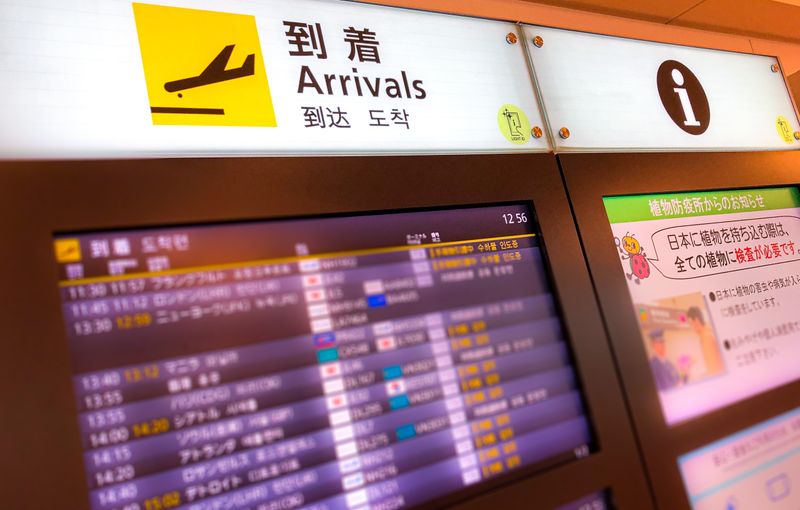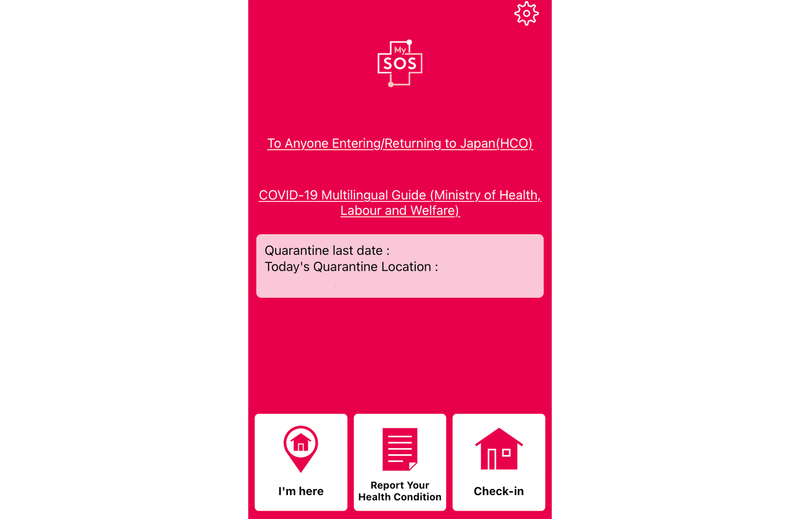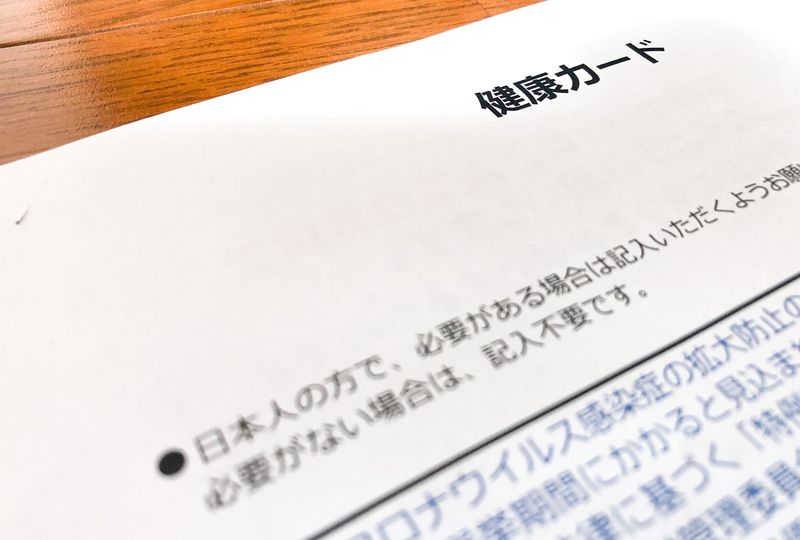May 6, 2022
Re-entry into Japan from the UK: Experience of COVID, quarantine procedures
One of the City-Cost team recently made the trip back to their home in the United Kingdom. This is their account of the experience in particular relating to re-entry into Japan in early May 2022 and the COVID-19 prevention and quarantine procedures they encountered. This is a personal account only and cannot replace advice or direction from official sources.

With the situation surrounding Japan’s COVID-19 border controls ever-changing I’d better rattle off these words about my own experience of entering Japan (or re-entering Japan) now, if I’m going to do it at all. Indeed, Japan PM Fumio Kishida announced from London just on Thursday the possibility of easing Japan’s entry restrictions further from June to bring them inline with other G7 nations, according to reports.
The setting for Kishida’s announcement is apt, as London was the point of departure for my re-entry to Japan on this occasion. Perhaps the prime minister might find this guide of some use!
Pre-departure
In March or April 2022 a window of opportunity presented itself to get back home to the UK. The collective understanding between myself and the Japanese partner was that re-entrants coming from the UK could do so without needing to quarantine if they were fully vaccinated (two regular jabs and a booster, with further qualifications relating to manufacturer) and that they tested COVID negative prior to departure from the UK and upon arrival in Japan.
I should add a further qualification here, measures regarding travel to and virus prevention in, in my understanding, may differ between England, Wales, Scotland and Northern Ireland. I was visiting England. In returning to Japan, as far as I’m aware, authorities in here make no such distinction.
Coming to this understanding of the re-entry conditions was not so easy. In fact, the gap between research required to understand entry requirements for England and re-entry requirements for Japan was staggering. Almost hilariously so if the situation surrounding the virus was not so serious.
To get to grips with the ever-changing landscape of Japan’s COVID border controls was to become buried in pre-requisites, confusing conditionals, documents dating back years, and updating tables (sometimes updated to being just blank). Even the person on the other end of one of the inquiry lines we called conceded that the latest information relating to re-entry into Japan was hard to come by.
Yes, for us at least, the easiest and most confidence-building way to get to the information was to pick up the phone. I think we started with a coronavirus consultation line courtesy of the Ministry of Health, Labour and Welfare (新型コロナウイルス感染症に関する厚生労働省の電話相談窓口): https://v-sys.mhlw.go.jp/contact/
We may have been directed to one of the numbers here: https://www.mhlw.go.jp/stf/seisakunitsuite/bunya/0000121431_00341.html
Much of the understanding regarding re-entry into Japan revolved around a list of “designated countries” for which some form of quarantine was / is required regardless of vaccination status. The mention of designated countries, or “shitei koku” (指定国), came up time and time again. Locating the list of said countries proved to be tricky.
This English-language Q&A document from the Ministry of Health, Labour and Welfare details on page 12 that travelers re-entering Japan from a “non-designated” country with proof of vaccination are not required to quarantine (should they test negative).
As does this PDF: https://www.mhlw.go.jp/content/000903661.pdf
This page on the Ministry of Health, Labour and Welfare website shows a table of “designated countries”: https://www.mhlw.go.jp/stf/seisakunitsuite/bunya/0000121431_00249.html
The above information can also be found on this page of the website of the Ministry of Foreign Affairs: https://www.mofa.go.jp/ca/fna/page4e_001053.html
By stark contrast the entry requirements (or lack thereof) for England detailed on GOV.UK - the website of the government of the UK:
“Guidance
Travel to England from another country during coronavirus (COVID-19)
You do not need to complete a UK passenger locator form before you travel, take any COVID-19 tests or quarantine when you arrive in England.”
Visit the page here: https://www.gov.uk/guidance/travel-to-england-from-another-country-during-coronavirus-covid-19
Getting a Vaccination Certificate of COVID-19
We were pretty sure that these “vaccine passports” would be of little use in England and I think we could have used our “vaccine coupons” as proof of vaccination status for re-entry into Japan (although I can’t be sure about this). We got our Vaccination Certificate of COVID-19 anyway. This required a trip to the city office. The certificates were posted out to us a few days later. (We were warned though, that the production and delivery of a Vaccination Certificate of COVID-19 could take as long as two weeks. My Number Card holders can obtain them online.)
Departing Japan for the UK
Ours was an early morning flight to London from Haneda Airport in Tokyo with Japan Airlines. Russia’s invasion of Ukraine and the consequent closing off of its airspace had meant that some of the flights to London had been canceled. Ours was rescheduled by a few hours and would fly over Alaska, Canada, Greenland and Iceland before approaching the UK.
Japan’s COVID border controls seemed to have little effect, if any, on check-in and immigration procedures for departing Japan except to say that the reduced number of flights made for a much calmer experience at the airport without it being weird or dystopian in any way.
In fact, the only standout departure moment came when we realized we were standing behind the actor Eddie Redmayne while waiting in line at immigration. Just the previous night we had watched the British actor on a Japanese variety TV show promoting the latest Fantastic Beasts film.
Departing the UK for Japan
COVID test for travel to Japan in the UK
At the time of writing, re-entering Japan from the UK requires proof of having tested negative for COVID-19 within 72 hours prior to departure, among other requirements.
Authorities in Japan had put together a COVID-19 test certificate format which it seems they were preferring travelers to use. You can find information and examples of the “Valid Format of Certificate of Negative Test Result” here from the Ministry of Foreign Affairs: https://www.mofa.go.jp/ca/fna/page25e_000334.html
What kind of COVID-19 travel test is valid for Japan?
I felt pretty sure that mass-travel-testing operations in the UK were not going to fill out some form I handed them from Japan, especially given that these operations send out test results by email. Use of the Japanese format, I felt, would likely limit us to some posh private clinic. Besides which, use of the government-issued format was not a hard-and-fast requirement during our trip.
It was also difficult to find information and experiences from other travelers about what kind of COVID travel test in the UK worked for getting into Japan. The Embassy of Japan in the UK does list some suggestions for places to get tested: https://www.uk.emb-japan.go.jp/itpr_ja/11_000001_00672.html
One of the popular testing operations back home, the Collinson Group, has a test center at London’s St. Pancras train station, offering a “Pre Departure PCR - Japan” test. Use of “Japan” in the test name might instill some confidence.
In the end we went with ExpressTest (by Cignpost) which has COVID-19 test centers for travel at London’s Heathrow Airport. A link to the test center was provided on the webpage of Japan Airlines (detailing travel from the UK to Japan) and the airline even provided a code to enter at the time of booking a test which would get travelers a small discount. Given that airlines wouldn’t let passengers board without a valid COVID-19 negative test certificate, this seemed to us a good sign that the ExpressTest COVID-19 travel test would work for entry to Japan.
We took a nucleic acid amplification test (LAMP - detailed as an accepted form of testing on the Japanese government’s test certificate) at Heathrow Airport with results sent by email within around two hours of being tested. The cost was about £95 per person (around 15,000 Japanese yen - with the JAL discount). Just in case, we asked staff at the center if they would fill-out the Japanese format certificate. They showed no interest in it.
We printed out copies of the ExpressTest certificate at our hotel in case it would be needed.
Registering with MySOS
Authorities in Japan detailed that registration of personal / travel details, vaccination certificates and pre-departure COVID-19 test results with the application MySOS would be a “fast track” way of getting through the arrival procedures after landing in Japan. MySOS is also where travelers can agree to the “pledge” to follow quarantine rules as required upon entry to Japan.
Travelers wanting to make use of this fast track option have to register all the details up to 16 hours prior to their arrival in Japan. Either way though, at the time of traveling all travelers had to download and use MySOS upon arrival in Japan in order to monitor their health and quarantine location, depending on requirements.
With English-language settings, filling out details and uploading images of certificates onto MySOS was easy enough. We had to wait a few hours for everything to be approved but it was nice to know that our vaccination and COVID-19 test certificates had been accepted prior to even checking in with the airline at Heathrow Airport.

(Edited screenshot of MySOS home screen after completion of re-entry procedures following arrival in Japan.)
In terms of checking in with the airline, along with passport and residence card, we also had to show staff our MySOS screen. (Without using MySOS I believe travelers have to show paper versions of certificates and pledge at check-in and arrival.)
More information about how MySOS is used can be found on these webpages from the Ministry of Health, Labour and Welfare: https://www.hco.mhlw.go.jp/en/
COVID-related procedures upon arrival in Japan
I had heard, via the Japanese partner, stories about Biblical queues, bone-dry mouths, and snack-starved travelers painfully shuffling their way around re-entry COVID paperwork and checks at Japan’s airports upon arrival. I had accepted that it might take us three or four hours, if not more, to get through it all.
We arrived at Haneda Airport mid-morning in the middle of Golden Week. From getting off the aircraft to getting on the train into Tokyo I’d say only about 1.5 hours passed. The whole process was very smooth.
I’ll try to describe it here but there may be some aspects missing.
Disembarking the aircraft
Unfortunately, the usual feverish chaos here. I had read reports (in Japanese) of more structured disembarkation based on virus-prevention measures / entry procedures. Nothing of the sort in our case.
Collect a kenko card (健康カード)
Armed with passport and MySOS screen open we were each directed to the first of a number of desks. At the first desk I was asked where I had come from and if I had any COVID-related health issues to report. MySOS was checked, some boxes ticked, vaccination status stamped, and I was given a health card to keep with me.

(A health card is given to travelers upon arrival in Japan.)
Take a COVID-19 test
The next stage was to be handed a COVID-19 test kit with a unique number attached.
Take the kit and health card to another desk. MySOS QR code scanned, a unique number sticker applied to the health card, and maybe some more boxes ticked. This unique number was detailed on a screen when the test results came through later.
Take the COVID-19 test. It was one of those tests where you have to spit into a tube. There were signs around the airport advising travelers to not eat or drink within 30 minutes prior to giving a sample (something which would have been better explained while in flight, I would have thought). For those travelers struggling to produce enough spit, other signs recommended thinking about something sour, like a lemon!
Hand over sample to be checked (for quantity, appropriate color etc).
Check smartphone applications and settings
At some point we were handed a bit of paper to say that we needed to have MySOS, the COVID-19 tracing app COCOA, and Google Maps installed on our phones. Here though, staff only checked that we had the appropriate settings to get notifications via MySOS. I was told that should a fellow passenger report a change in their health or test positive then I might receive notification via MySOS about being a close contact.
Waiting area for COVID-19 test results
This was the only point at which we experienced much of a wait, and it was only for about 15 minutes. We were basically in one of the airport lounges. Numbers were displayed on monitors when test results came through. At this point of course, we were free to eat, drink, go to the toilet, charge phones etc.
Collecting test results
There was no privacy afforded in collecting our test results. We filed past a counter, showed our health cards and a member of staff told us if we had tested negative or positive. Testing negative meant being handed a pink slip of paper. Testing positive, a blue slip of paper. Our slips were pink. We were told to show this at immigration.
Final quarantine desk
We went to another desk where, one-by-one, the solitary member of staff checked our health cards and negative test slips.
Immigration, baggage claim and customs as usual
Well, not quite. On the approach to the immigration counter an official asked me where I had come from, put another piece of paper in front of me and told me to check the “no” box and sign / date it. By this point I think I was so focused on the light at the end of the tunnel, and knackered to boot, that I didn’t read what I was signing. Not a good idea.
Still, I was able to pass through immigration, baggage claim (luggage already offloaded and waiting), and customs (no opening of said luggage) as usual.
Observations about COVID arrival procedures in Japan
While I’m not sure about how much faster things were made by filling out the MySOS details prior to departure I can’t help but feel like doing so made things a lot smoother as well as being a boost to the Are they going to let me back in? confidence.
Despite the flow upon arrival being very smooth and relatively painless, one can’t help but wonder - if the arrival of people from overseas is seen as such a virus risk by authorities in Japan, it’s striking just how exposed staff are to all these potential virus carriers coming in. I had wondered if everyone would be in full hazmat gear and kept behind perspex barriers, but this wasn’t the case at all. Indeed, there were countless exchanges of paper and phones between passengers and staff across small desks and narrow counters.
We had departed Japan with the understanding that, all being well, there would be no need for us to quarantine upon our return. Confidence in this was tested upon arrival. The language used on the paperwork and apps is all geared towards what you need or are required to do while in quarantine. At no point during the albeit very smooth arrivals process did anyone tell us whether or not we actually had to quarantine.
In fact, Japan is / was still operating on the principle that re-entrants have to quarantine. Except this principle extends to an ever-decreasing number of travelers from “designated countries.” In many cases it might be that no quarantine is required, but it seemed to this traveler that the paperwork has yet to catch up.
Back home
The MySOS screen was a bit confusing. The home screen displayed a “last date of quarantine” date (three full days after arrival, arrival date is considered as “day zero”). I could press a button to register where I was in quarantine on any given day and change said location on any given day. Except there was no requirement to quarantine. Reflecting this I received no video calls from the Health Monitoring Center for Overseas Entrants and no random location checks. We decided to stay put in the vicinity of our home anyway.
The day after our “last date of quarantine” I received the following message via MySOS:
“Canceled cooperation with Health Monitoring Center for Overseas Entrants
Thank you for your cooperation”
The information I had entered into MySOS prior to departure from the UK appears to have been deleted and as far as I can see there is no sign of any kind of personal information to be found on the app now, although I feel sure that it's been farmed off to some sort of big data operation somewhere. On the surface at least though, MySOS has been reset to its default mode.
I hope this information can be of some help even if some of it may be out-of-date by the time you read it.
Related
Japan to allow entry of visitors on unaccompanied package tours in further easing of border controls
How to get a COVID vaccine passport from a convenience store in Japan



0 Comments